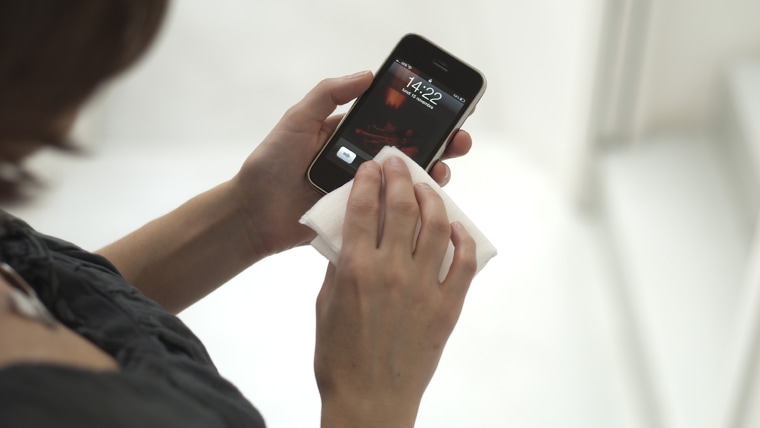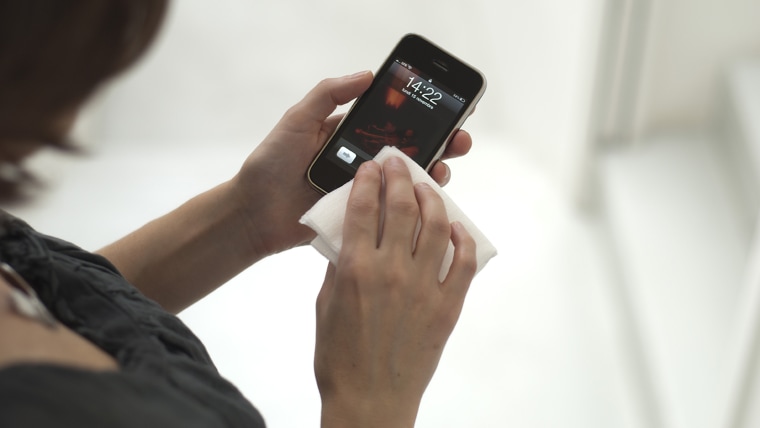
Think your home is clean? Some obvious (and not-so-obvious) spots could be collecting epic amounts of gunk, grime and bacteria. Check out 10 of the biggest dirt and germ magnets in your house and the best ways to get them squeaky clean and disinfected.
Dryer lint trap
Do you use dryer sheets? If so, simply pulling the lint out of the trap after every couple of loads isn’t enough. Dryer sheets are covered with a silicone-based film that can build up on the lint trap filter and create an invisible barrier. Wash it every six months to improve the performance of your dryer and increase its lifespan. “Just use warm soapy water and a cleaning toothbrush, wash gently, and leave to dry overnight,” says cleaning expert Melissa Maker, founder of CleanYourSpace.com. “Your dryer will work much more efficiently.” Maker adds, “Vacuuming the dryer lint trap is also important to remove any lodged dust, which can be a fire hazard.”
Inside the dishwasher
Why would something that gets washed out with hot water and soap need to be cleaned? Well, tiny bits of food, grease, and soap scum can cling together and get deposited in the corners of the dishwasher. As time passes, they can make your dishwasher look and smell bad, while also decreasing its efficiency, Maker says. She suggests first removing and washing the filter and then deodorizing and sanitizing the entire appliance. “Sprinkle a cup of baking soda on the bottom of your empty dishwasher and let it sit overnight,” she says. “The next morning, add a cup of vinegar to the dishwasher and run the hottest possible cycle. Your dishwasher will now be cleaned and odor free.”
Regrigerator coils
Spending just 15 minutes every six months cleaning your refrigerator coils can eliminate 70 percent of refrigerator malfunctions, extend the appliance’s lifespan and keep it running at maximum efficiency. When dirt and dust clog the coils, they can’t release heat properly, causing the compressor to run longer and work harder than it should. “Take a vacuum with a small brush attachment and run it along the coils to remove excess dust,” Maker says. “Remember to unplug your fridge before doing this and plug it back in once complete.”
Kitchen sink
Studies have shown there is more E. coli in a kitchen sink than in the toilet after you flush it. Not so appetizing, right? Bacteria love its wet atmosphere and feeding on food particles left on dirty dishes and put down the drain. Clean the sink basin daily with a disinfectant made for the kitchen to kill all the bad pathogens. “To easily disinfect a sink, create a mixture of one part rubbing alcohol to one part water, and spray over a clean sink,” Maker says. “It will dry quickly and disinfect, too.”
Trash can
Traces of food and liquids can escape the trash bag and contaminate the trash can itself. The inside of the can’s lid is an especially likely culprit for bacteria, mold and mildew. Use disinfecting wipes on the lid every time you take out the trash and deep clean once a month. “Sprinkle baking soda at the bottom of the bin, allow it to sit for 10 minutes to deodorize the can, spray with all-purpose cleaner and wipe with a paper towel,” Maker suggests. “Then rinse and dry.”
Bed pillows
Did you know an accumulation of dust mites and their waste can make a pillow double its weight in two years? (Studies have shown this also causes mattress weights to double in 10 years—we may never sleep well again!) In addition to the dead skin that rubs off while we sleep and the occasional drool stain, bed pillows no longer sound like a nice place to rest one’s head. The good news: Most are washable and should be laundered twice a year. To wash them, Maker says to place synthetic pillows two at a time in the wash, use gentle detergent and run through a heavy cycle. Then place the pillows in the dryer on low heat with a few tennis balls tied in sports socks to help beat excess moisture out. “Dry until there is no moisture left in the pillows to avoid mold growth,” she says.
Door knobs and light switches
Everyone touches door knobs and light switches almost every time they enter and exit a room, making them one of the dirtiest places in your home. Start wiping them down with a non-toxic disinfectant during your regular cleaning to stop the spread of germs, says Jolie Kerr, author of My Boyfriend Barfed In My Handbag … And Other Things You Can't Ask Martha. It will also help remove marks from dirt and grime. “White vinegar is a great non-toxic disinfectant,” Kerr says. “Apply a small amount to a rag or paper towel and give switchplates and doorknobs a once over just like you would your kitchen counters.”
Computer keyboard
Dust, crumbs, grease and stickiness from who knows what can add up to one grimy keyboard. And do your kids use your computer? Imagine where those grubby little hands have been! Some studies have shown keyboards have more bacteria than a toilet seat. To clean, “start with compressed air, which will dislodge all those crumbs and cat hairs from in between the keys,” Kerr says. “Follow with an electronics spray, tech wipe or just good old rubbing alcohol.”
Cell phone
Each square inch of your cell phone has about 25,000 germs, making it dirtier than your pet’s food dish, a shoe’s sole, and, of course, a toilet seat. To clean your smartphone without destroying it, Kerr says all you need are some antiseptic alcohol wipes, which can be found at any drugstore and are individually packaged, making them easy to toss in a purse or laptop bag.
Remote control
You may have heard that the remote control in a typical hotel room is disgusting, but the one in your own home isn’t any better. People are constantly handling it—often while eating, coughing and sneezing—making it one of the germiest household surfaces. One study found that half of the remote controls tested were positive for cold viruses. The most effective way to get a remote control clean is to use those same alcohol wipes you picked up to use on your cell phone, Kerr says.
A version of this article originally appeared on iVillage.
Ellen Sturm Niz is an editor and writer living, parenting and working in New York City. Follow her on Twitter, Pinterest, Tumblr, and Google+.
